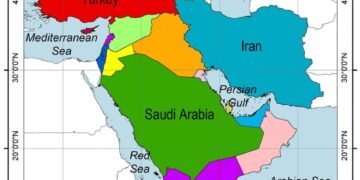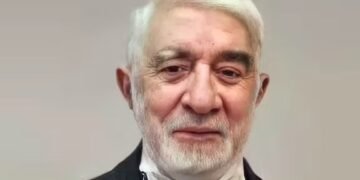DEIR AL-BALAH, Gaza Strip (AP) — Hamas-led militants released three visibly weak and emaciated Israeli hostages on Saturday, while Israel freed nearly 200 Palestinian prisoners in the latest exchange under the ongoing ceasefire, which has temporarily halted 16 months of war in Gaza.
The frail condition of the hostages and the way Hamas forced them to speak in a handover ceremony sparked outrage in Israel, increasing pressure on Prime Minister Benjamin Netanyahu. Despite this, Netanyahu has indicated that Israel may resume its military operations, even if it means leaving some hostages behind. “President Trump completely agreed with me: We will do everything to return all the hostages, but Hamas will not be there,” Netanyahu stated following the exchange.
The released hostages—Eli Sharabi, 52; Ohad Ben Ami, 56; and Or Levy, 34—were among approximately 250 people kidnapped during the Hamas-led attack on Israel on October 7, 2023, which triggered the war. Their severely malnourished appearance turned what should have been a moment of relief into one of shock and sorrow for Israelis.
Later that day, Israel freed 183 Palestinian prisoners, some of whom also appeared gaunt and in poor health. The Red Crescent reported that seven required hospitalization. Many previously released Palestinian prisoners have also described suffering abuse in Israeli custody.
This was the fifth exchange since the ceasefire began on January 19, bringing the total number of freed hostages to 21. The Red Cross expressed growing concern about the conditions of these releases, calling on all parties to ensure a dignified and private handover process.
More Hostages Await Release in Initial Ceasefire Phase
Israeli health officials have reported severe malnutrition and significant weight loss among the hostages who have been freed so far, raising urgent concerns for those still in captivity. “If anyone needed a reminder of how crucial it is to bring everyone back, today was a wake-up call,” said Moshe Or, the brother of hostage Avinatan Or, at a rally in Tel Aviv.
Gal Hirsch, Israel’s coordinator for hostage affairs, stated, “We will not remain silent about this. A message has been sent to mediators, and action will be taken accordingly.” Hamas’ military wing, however, defended its treatment of the hostages, claiming that it had worked to keep them alive despite Israeli airstrikes.
Under the first phase of the ceasefire agreement, 33 hostages and nearly 2,000 Palestinian prisoners are set to be released. The deal also allows displaced Palestinians to return to northern Gaza and increases humanitarian aid to the war-ravaged enclave. However, Hamas has confirmed that eight of the 33 hostages scheduled for release are deceased.
Trump’s Controversial Proposal Could Complicate Ceasefire Talks
Negotiations for a second phase of the ceasefire—where Hamas is expected to release dozens more hostages in exchange for a permanent ceasefire—could face new obstacles after former U.S. President Donald Trump proposed relocating Gaza’s Palestinian population elsewhere. While the idea was welcomed by Israeli officials, it was rejected by Palestinians and most of the international community, who argue such a move would violate international law.
Hamas may be less willing to release additional hostages if it believes the U.S. and Israel are serious about depopulating Gaza. The coming weeks will be critical in determining whether the ceasefire can hold—or if hostilities will resume.

 English
English






































